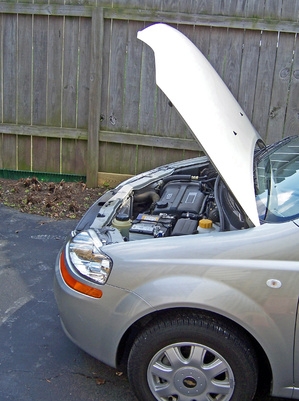
The starter motor in a vehicle runs off electrical power supplied by the battery. Its purpose is to push a spinning gear into the flywheel to engage the crankshaft. The spinning crankshaft will set the engine in motion. Once the starter goes bad, the starter will not be able to convert the electrical energy to mechanical energy. Replacing the faulty starter motor will be neccessary.
Park the car on a flat level surface. Ensure the parking brake is set.
Open the hood for access to the engine compartment. Isolate the battery by unbolting the positive and negative terminals with a line wrench.
Locate the starter under the vehicle. The starter is always located between the transmission ( transaxle if the vehicle is a front-wheel drive) and the engine.
Disconnect the wires at the top of the starter. The starter will have two studs on the solenoid with wires attached. Unbolt the nut with a socket wrench and pull the wires off the studs.
Unbolt the starter with a socket wrench. Pull the starter off the bracket by hand and place it in the box the new starter was sold in. The automotive-parts store will require the old starter returned for the core-deposit.
Position the new starter to the mounting bracket. Thread each bolt by hand. Once all the bolts are started, tighten with a socket wrench.
Unscrew the positive postand place the cable on the stud. Tighten the nut over the wire with a socket wrench. Repeat to install the negative wire.
Tighten the battery cables to the battery. Ensure both cables are tight on the terminal.
Attempt to start the vehicle. The car will start with very little hesitation.